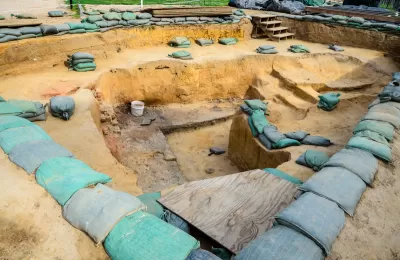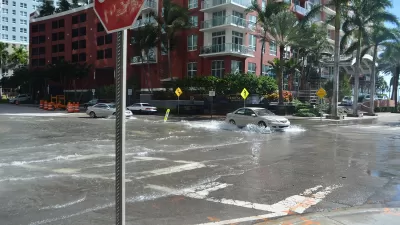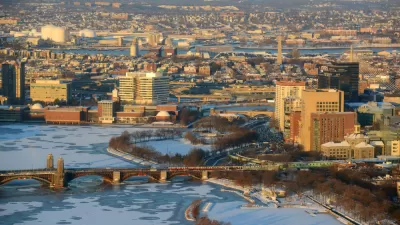Researchers have created a digital database of archaeological sites in the U.S.—and thousands could be lost to sea-level rise.

A new study shows that sea level rise could drown tens of thousands of archeological sites in the southeastern United States alone, potentially destroying critical evidence about early North American settlements and their own responses to climate change," Kate Wheeling writes in Pacific Standard.
According to the study, nearly 20,000 archaeological sites would be submerged if sea levels rose by one meter—an increase that could occur by the end of the century. At five meters, more than 32,000 sites would be destroyed. For more inland areas, it's not the sea itself but mitigation efforts that could pose a threat, as "development to accommodate relocated populations or to try to stave off flooding" could destroy cultural resources.
To complete the study, researchers catalogued more than half a million archaeological sites in a comprehensive multi-state database dubbed the Digital Index of North American Archaeology.
FULL STORY: HOW RISING SEA LEVELS THREATEN AMERICA'S CULTURAL HERITAGE

Planetizen Federal Action Tracker
A weekly monitor of how Trump’s orders and actions are impacting planners and planning in America.

Chicago’s Ghost Rails
Just beneath the surface of the modern city lie the remnants of its expansive early 20th-century streetcar system.

San Antonio and Austin are Fusing Into one Massive Megaregion
The region spanning the two central Texas cities is growing fast, posing challenges for local infrastructure and water supplies.

Since Zion's Shuttles Went Electric “The Smog is Gone”
Visitors to Zion National Park can enjoy the canyon via the nation’s first fully electric park shuttle system.

Trump Distributing DOT Safety Funds at 1/10 Rate of Biden
Funds for Safe Streets and other transportation safety and equity programs are being held up by administrative reviews and conflicts with the Trump administration’s priorities.

German Cities Subsidize Taxis for Women Amid Wave of Violence
Free or low-cost taxi rides can help women navigate cities more safely, but critics say the programs don't address the root causes of violence against women.
Urban Design for Planners 1: Software Tools
This six-course series explores essential urban design concepts using open source software and equips planners with the tools they need to participate fully in the urban design process.
Planning for Universal Design
Learn the tools for implementing Universal Design in planning regulations.
planning NEXT
Appalachian Highlands Housing Partners
Mpact (founded as Rail~Volution)
City of Camden Redevelopment Agency
City of Astoria
City of Portland
City of Laramie





























